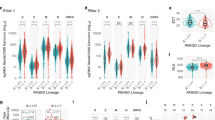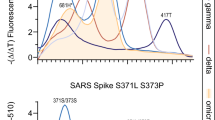Abstract
Infectious agents often challenge therapeutics, from antibiotics resistance to antigenic variability affecting inoculation measures. Over the last decades, genome sequencing arose as an important ally to address such challenges. In bacterial infection, whole-genome-sequencing (WGS) supports tracking pathogenic alterations affecting the human microbiome. In viral infection, the analysis of the relevant sequence of nucleotides helps with determining historical variants of a virus and elucidates details about infection clusters and their distribution. Additionally, genome sequencing is now an important step in inoculation protocols, isolating target genes to design more robust immunisation assays. Ultimately, genetic engineering has empowered repurposing at scale, allowing long-lasting repeating clinical trials to be automated within a much shorter time-frame, by adjusting existing protocols. This is particularly important during sanitary emergencies as the ones caused by the 2014 West African Ebola outbreak, the Zika virus rapid spread in both South and North America in 2015, followed by Asia in 2016, and the pandemic caused by the SARS-CoV-2, which has infected more than 187 million people and caused more than 4 million deaths, worldwide, as per July 2021 statistics. In this scenery, this chapter presents a novel fully automated strategy to handle antigenic variability in immunisation protocols. The methodology comprises of two major steps (1) nanopore sequencing of infectious agent variants – the focus is on the SARS-CoV-2 and its variants; followed by (2) mRNA vector design for immunotherapy. This chapter presents the nanopore sequencing step and Chapter 17 introduces a protocol for mRNA vector design.
Access this chapter
Tax calculation will be finalised at checkout
Purchases are for personal use only
Similar content being viewed by others
References
Le VTM, Diep BA (2013) Selected insights from application of whole-genome sequencing for outbreak investigations. Curr Opin Crit Care 19:432–439
Quainoo S, Coolen JPM, van Hijum SAFT et al (2017) Whole-genome sequencing of bacterial pathogens: the future of nosocomial outbreak analysis. Clin Microbiol Rev 30:1015–1063
Reuter S, Ellington MJ, Cartwright EJP et al (2013) Rapid bacterial whole-genome sequencing to enhance diagnostic and public health microbiology. JAMA Intern Med 173:1397–1404. https://doi.org/10.1001/jamainternmed.2013.7734
Roetzer A, Diel R, Kohl TA et al (2013) Whole genome sequencing versus traditional genoty** for investigation of a mycobacterium tuberculosis outbreak: a longitudinal molecular epidemiological study. PLoS Med 10:e1001387. https://doi.org/10.1371/journal.pmed.1001387
Salipante SJ, SenGupta DJ, Cummings LA et al (2015) Application of whole-genome sequencing for bacterial strain ty** in molecular epidemiology. J Clin Microbiol 53:1072–1079. https://doi.org/10.1128/JCM.03385-14
Acinas SG, Sarma-Rupavtarm R, Klepac-Ceraj V, Polz MF (2005) PCR-induced sequence artifacts and bias: insights from comparison of two 16s rRNA clone libraries constructed from the same sample. Appl Environ Microbiol 71:8966–8969. https://doi.org/10.1128/AEM.71.12.8966-8969.2005
Andersen KG, Rambaut A, Lipkin WI et al (2020) The proximal origin of SARS-CoV-2. Nat Med 26:450–452
Chang CK, Hou MH, Chang CF et al (2014) The SARS coronavirus nucleocapsid protein – forms and functions. Antivir Res 103:39–50
Chen Z, Xu X, Wang Y et al (2019) DNA segments of African Swine Fever Virus detected for the first time in hard ticks from sheep and bovines. Syst Appl Acarol 24:59–80. https://doi.org/10.11158/saa.24.1.13
Cowan D, Meyer Q, Stafford W et al (2005) Metagenomic gene discovery: past, present and future. Trends Biotechnol 23:321–329
Keller MW, Rambo-Martin BL, Wilson MM et al (2018) Direct RNA sequencing of the coding complete Influenza A virus genome. Sci Rep 8:14408. https://doi.org/10.1038/s41598-018-32615-8
Kemal KS, Reinis M, Weiser B, Burger H (2009) Methods for viral RNA isolation and PCR amplification for sequencing of near full-length HIV-1 genomes. Methods Mol Biol 485:3–14. https://doi.org/10.1007/978-1-59745-170-3_1
Khatoon Z, Figler B, Zhang H, Cheng F (2014) Introduction to RNA-seq and its applications to drug discovery and development. Drug Dev Res 75:324–330. https://doi.org/10.1002/ddr.21215
Kreuze JF, Perez A, Untiveros M et al (2009) Complete viral genome sequence and discovery of novel viruses by deep sequencing of small RNAs: a generic method for diagnosis, discovery and sequencing of viruses. Virology 388:1–7. https://doi.org/10.1016/j.virol.2009.03.024
Weng SF, Reps J, Kai J et al (2017) Can machine-learning improve cardiovascular risk prediction using routine clinical data? PLoS One 12:e0174944. https://doi.org/10.1371/journal.pone.0174944
Maitra A, Sarkar MC, Raheja H et al (2020) Mutations in SARS-CoV-2 viral RNA identified in Eastern India: possible implications for the ongoing outbreak in India and impact on viral structure and host susceptibility. J Biosci 45:1–18. https://doi.org/10.1007/s12038-020-00046-1
Nayak A, Tassetto M, Kunitomi M, Andino R (2013) RNA interference-mediated intrinsic antiviral immunity in invertebrates. Curr Top Microbiol Immunol 371:183–200. https://doi.org/10.1007/978-3-642-37765-5_7
Anderson EJ, Rouphael NG, Widge AT et al (2020) Safety and immunogenicity of SARS-CoV-2 mRNA-1273 vaccine in older adults. N Engl J Med 383:2427–2438. https://doi.org/10.1056/nejmoa2028436
Niu X, Sun Y, Chen Z et al (2017) Using small RNA-seq data to detect siRNA duplexes induced by plant viruses. Genes (Basel) 8:163. https://doi.org/10.3390/genes8060163
Choi KY, Chung H, Min KH et al (2010) Self-assembled hyaluronic acid nanoparticles for active tumor targeting. Biomaterials 31:106–114. https://doi.org/10.1016/j.biomaterials.2009.09.030
Paprotka T, Delviks-Frankenberry KA, Cingöz O et al (2011) Recombinant origin of the retrovirus XMRV. Science (80- ) 333:97–101. https://doi.org/10.1126/science.1205292
Selitsky SR, Marron D, Hollern D et al (2020) Virus expression detection reveals RNA-sequencing contamination in TCGA. BMC Genomics 21:1–11. https://doi.org/10.1186/s12864-020-6483-6
Srivastava S, Banu S, Singh P et al (2021) SARS-CoV-2 genomics: an Indian perspective on sequencing viral variants. J Biosci 46:1–14
Su S, Wong G, Shi W et al (2016) Epidemiology, genetic recombination, and pathogenesis of coronaviruses. Trends Microbiol 24:490–502
Morris G, Arkadir D, Nevet A et al (2004) Coincident but distinct messages of midbrain dopamine and striatal tonically active neurons. Neuron 43:133–143. https://doi.org/10.1016/j.neuron.2004.06.012
Tang Q, Song Y, Shi M et al (2015) Inferring the hosts of coronavirus using dual statistical models based on nucleotide composition. Sci Rep 5:17155. https://doi.org/10.1038/srep17155
Xu X, Bei J, Xuan Y et al (2020) Full-length genome sequence of segmented RNA virus from ticks was obtained using small RNA sequencing data. BMC Genomics 21:1–8. https://doi.org/10.1186/s12864-020-07060-5
Xu X, Chen P, Wang J et al (2020) Evolution of the novel coronavirus from the ongoing Wuhan outbreak and modeling of its spike protein for risk of human transmission. Sci China Life Sci 63:457–460
Aralaguppe SG, Siddik AB, Manickam A et al (2016) Multiplexed next-generation sequencing and de novo assembly to obtain near full-length HIV-1 genome from plasma virus. J Virol Methods 236:98–104. https://doi.org/10.1016/j.jviromet.2016.07.010
Zhu N, Zhang D, Wang W et al (2020) A novel coronavirus from patients with pneumonia in China, 2019. N Engl J Med 382:727–733. https://doi.org/10.1056/nejmoa2001017
Astuti I, Ysrafil (2020) Severe acute respiratory syndrome coronavirus 2 (SARS-CoV-2): an overview of viral structure and host response. Diabetes Metab Syndr Clin Res Rev 14:407–412. https://doi.org/10.1016/j.dsx.2020.04.020
Azkur AK, Akdis M, Azkur D et al (2020) Immune response to SARS-CoV-2 and mechanisms of immunopathological changes in COVID-19. Allergy 75:1564–1581
Biswas N, Majumder P (2020) Analysis of RNA sequences of 3636 SARS-CoV-2 collected from 55 countries reveals selective sweep of one virus type. Indian J Med Res 151:450–458. https://doi.org/10.4103/ijmr.IJMR_1125_20
Buclez PO, Dias Florencio G, Relizani K et al (2016) Rapid, scalable, and low-cost purification of recombinant adeno-associated virus produced by baculovirus expression vector system. Mol Ther Methods Clin Dev 3:16035. https://doi.org/10.1038/mtm.2016.35
Cantara WA, Olson ED, Musier-Forsyth K (2014) Progress and outlook in structural biology of large viral RNAs. Virus Res 193:24–38. https://doi.org/10.1016/j.virusres.2014.06.007
Cao S, Strong MJ, Wang X et al (2015) High-throughput RNA sequencing-based virome analysis of 50 lymphoma cell lines from the Cancer Cell Line Encyclopedia project. J Virol 89:713–729. https://doi.org/10.1128/jvi.02570-14
Houldcroft CJ, Beale MA, Breuer J (2017) Clinical and biological insights from viral genome sequencing. Nat Rev Microbiol 15:183–192
Rédei GP (2008) Sanger method of DNA sequencing. In: Encyclopedia of genetics, genomics, proteomics and informatics. Springer, Cham, pp 1755–1755
Jankevics E (1998) DNA Sequencing. In: Basic cloning procedures. Springer, Berlin, Heidelberg, pp 22–42
Kück U, Nowrousian M (2015) From Maxam-Gilbert and Sanger to the next generation sequencing. BIOspektrum 21:25–27. https://doi.org/10.1007/s12268-015-0529-3
Elahi E, Ronaghi M (2004) Pyrosequencing: a tool for DNA sequencing analysis. Methods Mol Biol 255:211–219. https://doi.org/10.1385/1-59259-752-1:211
Philpott M, Watson J, Thakurta A et al (2021) Nanopore sequencing of single-cell transcriptomes with scCOLOR-seq. Nat Biotechnol 39:1517–1520. https://doi.org/10.1038/s41587-021-00965-w
Sun X, Song L, Yang W et al (2020) Nanopore sequencing and its clinical applications. In: Methods in molecular biology. Humana Press Inc., pp 13–32
Oude Munnink BB, Nieuwenhuijse DF, Stein M et al (2020) Rapid SARS-CoV-2 whole-genome sequencing and analysis for informed public health decision-making in the Netherlands. Nat Med 26:1405–1410. https://doi.org/10.1038/s41591-020-0997-y
SARS-CoV-2 coronavirus NGS reagents | IDT. https://eu.idtdna.com/pages/landing/coronavirus-research-reagents/ngs-assays. Accessed 6 Jul 2021
Janus J (2020) Using whole genome sequencing to help combat COVID-19. https://www.phgfoundation.org/blog/wgs-to-combat-COVID-19. Accessed 6 Jul 2021
Viral Genomes. https://www.ncbi.nlm.nih.gov/genome/viruses/. Accessed 6 Jul 2021
Harrison AG, Lin T, Wang P (2020) Mechanisms of SARS-CoV-2 transmission and pathogenesis. Trends Immunol 41:1100–1115
Rodriguez-Morales AJ, Bonilla-Aldana DK, Balbin-Ramon GJ et al (2020) History is repeating itself: probable zoonotic spillover as the cause of the 2019 novel Coronavirus Epidemic. Infez Med 28(1):3–5. https://pubmed.ncbi.nlm.nih.gov/32009128/. Accessed 6 Jul 2021
Variants: distribution of cases data, 20 May 2021 – GOV.UK. https://www.gov.uk/government/publications/covid-19-variants-genomically-confirmed-case-numbers/variants-distribution-of-cases-data. Accessed 6 Jul 2021
Peeri NC, Shrestha N, Siddikur Rahman M et al (2021) The SARS, MERS and novel coronavirus (COVID-19) epidemics, the newest and biggest global health threats: what lessons have we learned? Int J Epidemiol 49:717–726
Rodriguez-Morales AJ, Dhama K, Sharun K et al (2020) Susceptibility of felids to coronaviruses. Vet Rec 186:e21
Senapati S, Banerjee P, Bhagavatula S et al (2021) Contributions of human ACE2 and TMPRSS2 in determining host–pathogen interaction of COVID-19. J Genet 100:1–16
COVID-19: epidemiology, virology and clinical features – GOV.UK. https://www.gov.uk/government/publications/wuhan-novel-coronavirus-background-information/wuhan-novel-coronavirus-epidemiology-virology-and-clinical-features. Accessed 7 Jul 2021
Ni W, Yang X, Yang D et al (2020) Role of angiotensin-converting enzyme 2 (ACE2) in COVID-19. Crit Care 24:1–10
Jaimes JA, Millet JK, Whittaker GR (2020) Proteolytic cleavage of the SARS-CoV-2 spike protein and the role of the novel S1/S2 site. iScience 23:101212. https://doi.org/10.1016/j.isci.2020.101212
**a S, Lan Q, Su S et al (2020) The role of furin cleavage site in SARS-CoV-2 spike protein-mediated membrane fusion in the presence or absence of trypsin. Signal Transduct Target Ther 5:1–3
Örd M, Faustova I, Loog M (2020) The sequence at Spike S1/S2 site enables cleavage by furin and phospho-regulation in SARS-CoV2 but not in SARS-CoV1 or MERS-CoV. Sci Rep 10:1–10. https://doi.org/10.1038/s41598-020-74101-0
Public Health England (2020) Understanding cycle threshold (Ct) in SARS-CoV-2 RT-PCR: a guide for health protection teams. Public Health England
Zhu Y, Li J, Pang Z (2021) Recent insights for the emerging COVID-19: drug discovery, therapeutic options and vaccine development. Asian J Pharm Sci 16(1):4–23
Gorbalenya AE, Baker SC, Baric RS et al (2020) The species Severe acute respiratory syndrome-related coronavirus: classifying 2019-nCoV and naming it SARS-CoV-2. Nat Microbiol 5:536–544
Author information
Authors and Affiliations
Corresponding author
Editor information
Editors and Affiliations
Rights and permissions
Copyright information
© 2023 The Author(s), under exclusive license to Springer Science+Business Media, LLC, part of Springer Nature
About this protocol
Cite this protocol
Pereira, G.C. (2023). An Automated Strategy to Handle Antigenic Variability in Immunisation Protocols, Part I: Nanopore Sequencing of Infectious Agent Variants. In: Pereira, G.C. (eds) Gene, Drug, and Tissue Engineering. Methods in Molecular Biology, vol 2575. Humana, New York, NY. https://doi.org/10.1007/978-1-0716-2716-7_16
Download citation
DOI: https://doi.org/10.1007/978-1-0716-2716-7_16
Published:
Publisher Name: Humana, New York, NY
Print ISBN: 978-1-0716-2715-0
Online ISBN: 978-1-0716-2716-7
eBook Packages: Springer Protocols




